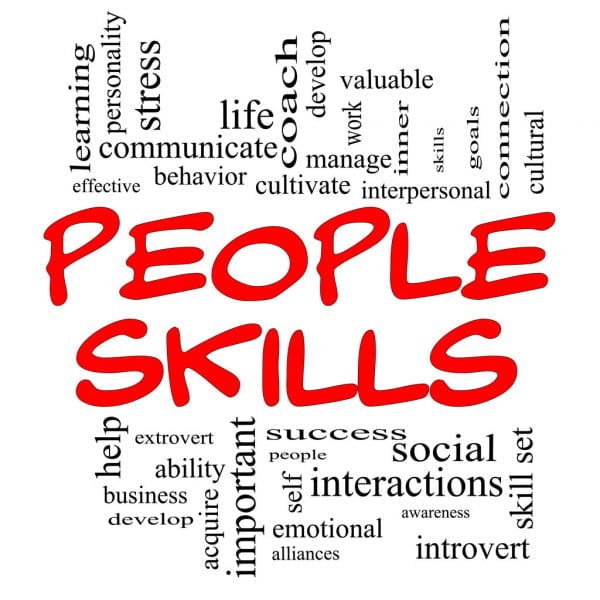CONFLICT MANAGEMENT MECHANISM
TOC
Table of Content
CONFLICT MANAGEMENT MECHANISM. The result of conflict may arise as positive or negative based on how those involved choose to approach it.
There are four conflict resolution mechanisms or strategies that mostly appear in the world.
- Avoiding
- Smoothing
- Forcing
- Physical or mental withdrawal from the conflict.
- Accommodating the other party’s interests.
- Using power tactics to achieve a win.
- Confronting – Facing the conflict directly, and working it through to a mutually satisfactory resolution.
- The above approaches can be grouped into three basic conflict management mechanisms:
1. Win/Lose Strategy:
- This approach eliminates the conflict by having one individual “win” over the other. In other words, an individual achieves his goals at the expense of others.
- Thus it can be said that this strategy may not allow maintaining good human relations.
2. Lose/Lose Strategy:
- This view eliminates the conflict by having both individuals “lose” something.
- Instead of negative results faced by both individuals, this technique can eliminate conflicts.
It can be applied in three basic ways:
Compromise:
- In it, both the parties are asked to
- compromise. Each person involved must “give in” to the other.
- Here the third party is going to decide on how to resolve the conflict.
- This view often gives results in a problem-solving solution.
Arbitration:
Rules and Regulations:
- Following general rules and regulations can also resolve a conflict that may lead to a losing/losing situation.
3. Win/Win Strategy:
- The aim of the technique solves the problem instead of not shifting the blame on others.
The following issues are involved in this approach:
- Listen to all points of view.
- Define the basic issues.
- Create an atmosphere of trust among all involved.
- The belief is that the problem will be solved on merit and not through personal or political influence.
This technique gives us an appropriate solution that all parties accept and, hence improves good human relations.
Check Your progress
- 1. Define Conflict
- 2. What is Intergroup Conflict?
- 3. Explain win/win strategy as a Conflict Management Mechanism.
STRESS MANAGEMENT COPING TECHNIQUES
- There are two coping techniques:
A. Problem-focused coping:
- Problem-focused coping is Lazarus’ term for the coping strategy of facing one’s problems and trying to solve them by direct action.
- Psychologically, problem-focused coping is highly beneficial.
- It increases a person’s sense of self-esteem, control, and effectiveness.
B. Emotion-focused coping:
- This term is used by Lazarus for emotionally responding to stress, especially by using defense mechanisms.
Main ways of handling stress:
1. Avoid unnecessary stress:
- Learn how to say “No”
- It may be in your personal life or maybe in your professional life avoid or refuse to accept added responsibility.
- Avoid the people who stress you out.
- Avoid hot-button topics.
- Make a to-do list – analyze your schedule, and daily tasks.
- Avoid negative self-talk.
2. Alter the situation:
- Express your feelings instead of keeping inside.
- Be willing to compromise
- Be more assertive
- Time management
Adapt to the Stressor:
- Reframe the problems – look at the problem positively.
- Look at the big picture – analyze the stressful situation and then ask yourself how it should be long-term important for me or not if your answer is no then let things go.
- Focus on positive self-talk.
Accept the things you can’t change:
- Don’t try to control uncontrollable look for the upside – when facing major challenges, try to look at them as opportunities for personal growth learn to forgive
Make time for fun and relaxation:
- Go for a walk
- Spend time in nature
- Call a good friend
- Write in your diary
- Play with kid
- Play with pet
- Curl up with a good book
- Listen to music
- Watch a comedy
- Set a site relaxation time
- Do something you enjoy every day
Adopt a healthy lifestyle:
- Exercise regularly
- Do yoga
- Eat a healthy diet
- Reduce caffeine and sugar – by reducing the amount of coffee, soft drinks, chocolate, and sugar snacks in your diet,
- you will feel more relaxed and you will sleep better.
- Avoid alcohol, cigarettes, and drugs
- Get enough sleep
MASLOW’S THEORY OF SELF ACTUALIZATION
Definition and Meaning:
- Abraham Maslow innovates the theory of self-actualization.
- Maslow identified five sets of human needs.
- The five sets of needs are arranged in a hierarchy of their importance to individuals.
- Maslow’s hierarchy of needs includes the following:
1. Physiological Needs:
- The basic needs of human beings are physiological.
- Food clothing and shelter come under it.
- Such needs lie at the lowest level of hierarchy.
- According to Maslow, such needs are to be satisfied first and then the other needs.
2. Safety and Security Needs:
- These second needs come under the hierarchy of needs.
People need:
- Safety of life and property
- Security of job, income, and investment.
3. Social Needs:
- Human beings also feel the need to belong to a group or community.
- Nobody would prefer to live in isolation from the rest of the society or group.
- They prefer to be loved and cared for by others – i. e. their family members, workmates, friends, superiors, and others.
4. Esteem Needs:
- It talks about the Ego needs.
- People always feel that others should respect them.
- People like others should praise and give recognition.
- Everyone like others should have a good opinion about them in society/among the people.
5. Self-actualization needs:
- These needs lie at the highest level of the hierarchy of needs.
- Very few people have such needs.
- Such needs induce a person to accomplish something special that others have not done.
- The need for challenging jobs, or the need for the highest level of promotion comes from these needs.
- In other words, through self-actualization needs, a person feels the need to realize one’s potential to the highest possible level.
Salient features of Self –actualization theory:
- People have a wide range of needs.
- The employees put in their efforts to satisfy their needs.
- Human needs are arranged into a hierarchy.
There are some needs at the lower level, and there are some other needs at the higher level of hierarchy.
- Lower-level needs must be satisfied either wholly or partly before higher-level needs emerge.
- In other words, a higher level need does not become active, if a lower level need remains unfulfilled.
- It is to be noted a satisfied need is not a motivator.
- In other words, it ceases to influence human behavior.
- It is the unsatisfied need that acts as a motivator.
- A higher-level need arises before a lower-level need is completely satisfied.
- Thus, safety needs would emerge before the physiological needs are completely satisfied, and so on.
Criticism of Maslow’s Theory of Self-actualization:
1. When the need is not satisfied, it becomes a motive.
- So cultures in which physiological needs like hunger and thirst are easily satisfied, physiological motives would not have much strength.
2. Maslow has organized human needs vertically, but it is possible to do so horizontally.
- Some people have simultaneous needs for physical comfort and safety, and self-esteem, and other higher needs.
- For example, a person who is still seeking love may be strongly motivated by art and poetry.
- The latter needs are growth needs.
3. People who have satisfied their “lower” needs do not always seek “higher” ones.
- Maslow himself had pointed out that even if all the other needs are satisfied, people do not automatically become self-actualized.
4. Some people aim to satisfy “higher” needs even at the cost of “lower” needs.
- Human history is full of examples of people who prefer to starve rather than be humiliated.
Check Your progress
- 1. State any two measures of coping with stress.
- 2. What is self-actualization needed?
- 3. What factors are covered under safety and security needs?
EFFORTS TOWARDS BUILDING PEACE AND HARMONY IN SOCIETY
- Building peace is the necessity of today’s world.
- Peace is the natural state of balance and harmony with joy, exploration, and excitement.
- The world is a beautiful place with immense opportunities for learning and positive excitement.
- The task of building peace starts within the individual.
- The process of peacebuilding is multi-layered.
- Many people believe wholeheartedly that peace needs to be built but have some difficulty in seeing where to start.
Here are a few first ideas, based on the principle that lasting peace is best achieved through love.
- Make a new friend, later plan with him/her a peace-building activity.
- Talk through your anxieties about getting involved with a friend.
- Plan to do something, however small.
- Identify one thing you are good at and see how to use it to build peace, locally, nationally, or wider.
- Build or join a supportive network organization with an interest in peacebuilding close to your own.
- Put interested people in touch with existing organizations or each other.
- Have a neighborhood party or picnic to celebrate a happy event.
- Encourage conversation about peacebuilding there.
- Offer your help to an individual or organization involved in building peace.
- Run or support a local peace festival with music, theatre, and games.
- Invite prominent local people; lobby them by offering your help in promoting peace.
Organize a conference.
- Write an article outlining your ideas and vision.
- Communal harmony is a solution to aggression and violence in Indian society.
- Communal harmony is an aspect of National Integration.
- To maintain harmony and peace introduce and learn the pluralistic nature of Indian society.
Make a psychological analysis of conflicts and stress.
- Follow the physical and psychological strategies to come out from frustration, conflicts, and stress.
- When conflict and stress occur into public aggression and violence, at the same time one should understand group or mob or public psychology and deal with it.
- One should think ten times before resorting to aggression and violence publicly and its consequences.
- The political, religious, social, cultural parties, institutions, and organizations who for personal gain and fame encourage communal riots, aggression, and violence, should be immediately banned from functioning and the leaders should be immediately imprisoned.
- Counseling sessions in the forms of dramas, street play, poetry, songs, slogans, chart show, discussions, debates, and elocutions must be organized to bring communal harmony and peace.
- People in India must be given special lessons to maintain law and order and harmony and peace.




